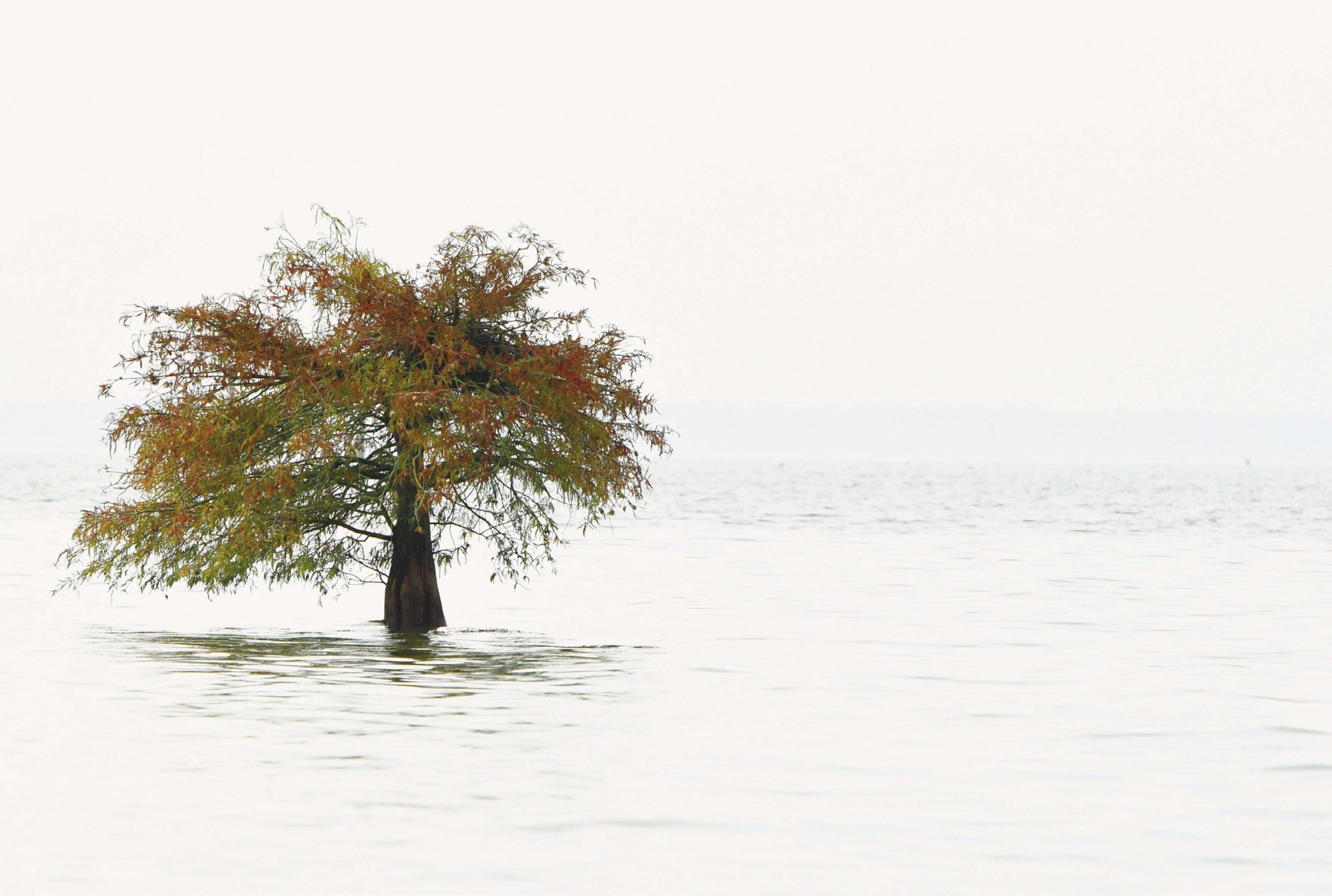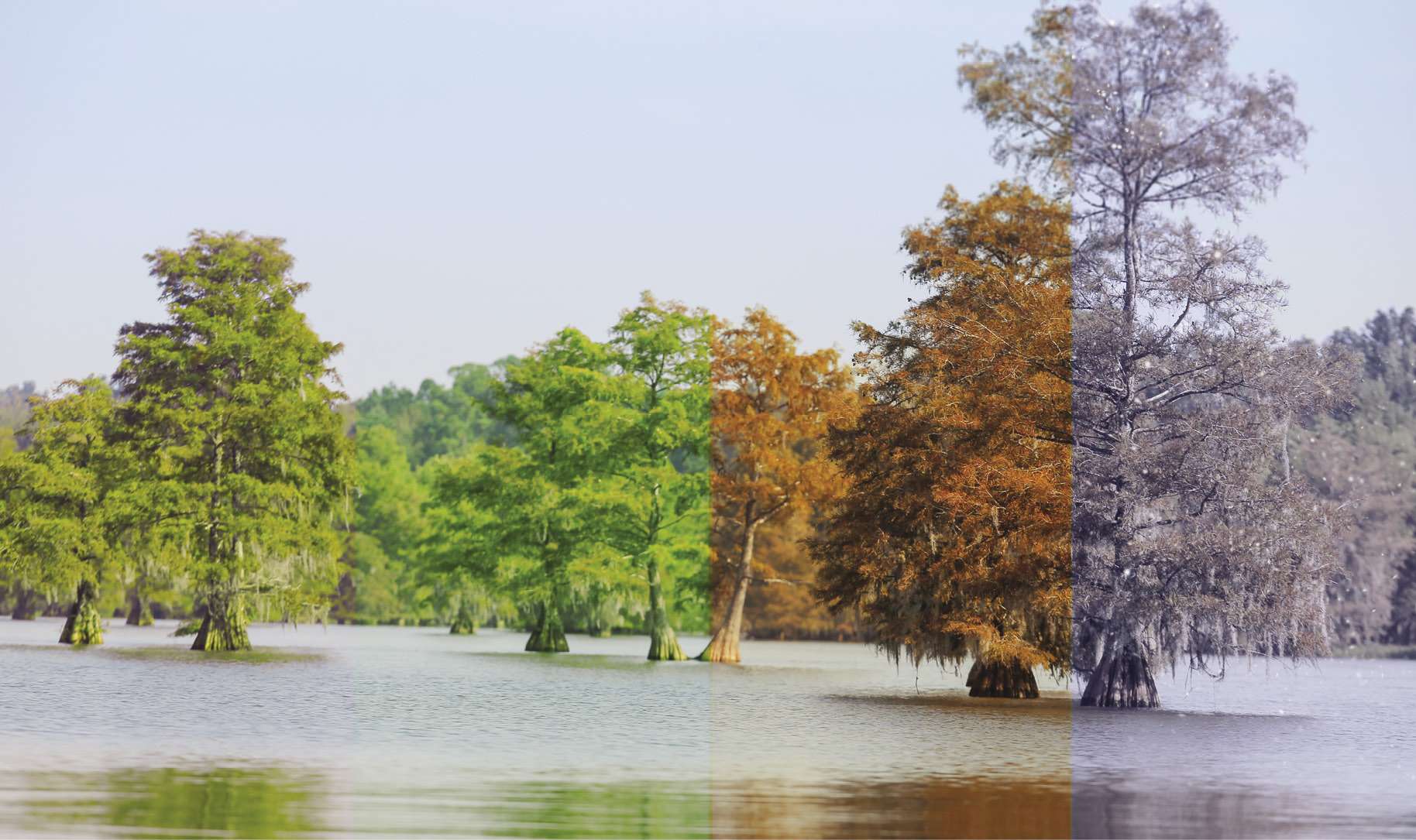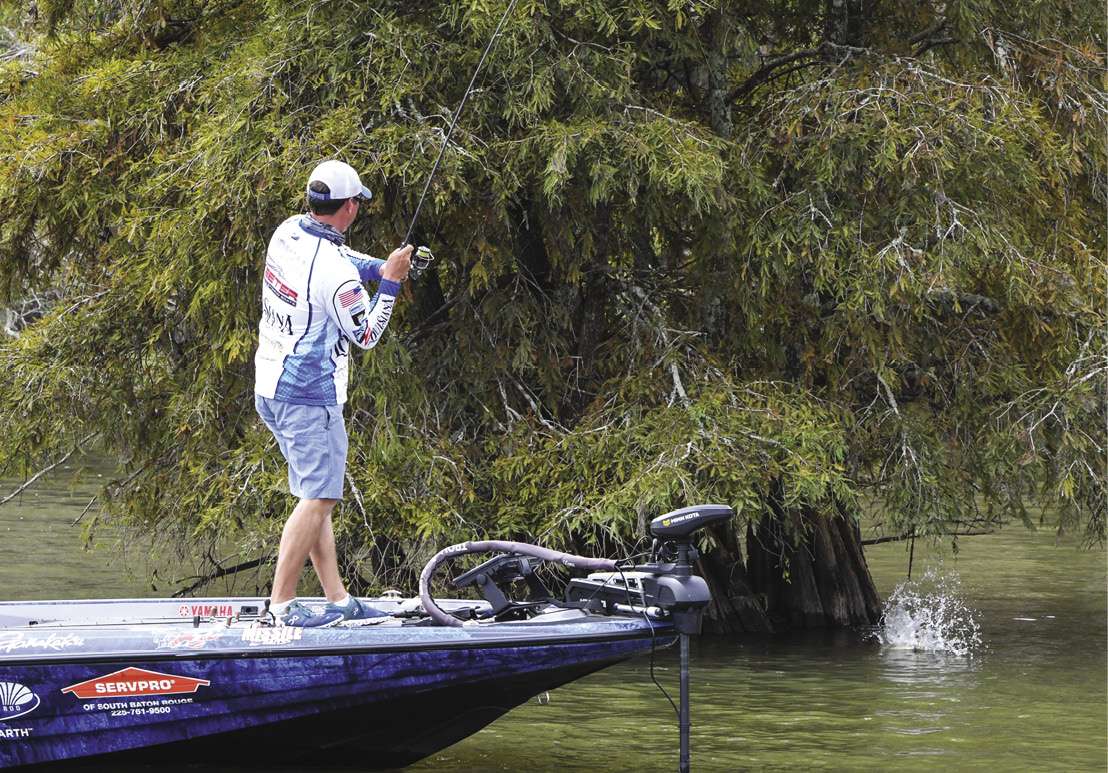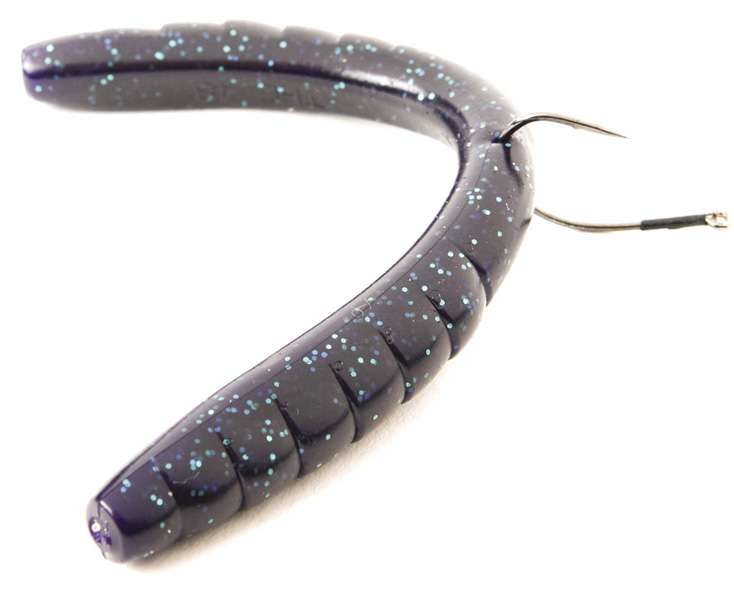
In most southern bass fisheries, targeting cypress trees makes as much sense as putting the plug in the boat. However, unlike that water-intrusion device, cypress trees are not a one-dimensional deal. Fact is, the when, where and how make a lot of difference.
“Cypress trees grow all over the country, and they’re a key factor in many Southern watersheds, from Texas and Louisiana, all along the Gulf Coast to the east coast of Florida and up the Eastern Seaboard through the Carolinas and parts of Virginia,” said Florida pro Bernie Schultz. “Cypress trees are key forms of cover for holding bass at key times of the year, or under certain conditions. The key is understanding what the fish need in different scenarios.”
From spawning to feeding, these water-tolerant trees offer loads of cover with undeniable aesthetic ambiance. It might “all look fishy,” but a handful of logical preferences merit consideration.
What a fish wants
Cypress selection starts with seasonality. With the assumption that feeding always factors into bass behavior, let’s look at the foundational elements.
Spring: Cypress tree root structures offer prime spawning areas — either amid the hard structure when the bottom’s clean or on top of the wood if there’s too much detritus. After the spawn, cypress swamps hide millions of fry and their guarding papas, all of which will move progressively outward as the babies grow.
Ideal areas are the typical shallow flats, oxbows and sheltered pockets, but cypress trees lining ditches and drains will interest the arriving prespawners and departing postspawners.
Summer: During the dog days, Schultz knows it’s all about the cooler water, so he likes the trees that are farthest from the bank with good current exposure. Along with deeper positions, Schultz pays attention to subtle depressions around individual trees, as such random variances are fish magnets.
Texas stick Frank Talley agrees and adds this perspective: “Typically, cypress lakes are shallow, so a depth change of 6 inches to a foot can be significant. You don’t have to see a 4-foot drop for it to hold fish.”

Fall: Depending on weather patterns, fall fish may still be seeking shady relief, but Schultz said they also use cypress habitat as rest stops.
“Sure, there’s a forage base that relates to cypress trees, and I’m sure the bass find food there, but when they’re not actively schooling on baitfish, they’re relating to the trees,” Schultz said. “That’s just where they hold when they’re not feeding.”
Winter: Wood holds heat, so shivering bass often huddle next to deeper cypress trees, especially those offering prespawn staging habitat outside of the go zone. Schultz points out that, while winter trees have less foliage and therefore less canopy than summer offers, depth is the key component.
“It’s [usually] the deeper trees or the trees in protected areas that have sufficient depth for the fish to suspend,” Schultz said. “On warm days, they could be on the shallower trees because the water will be warmer there.”
Key features
Cover enough water and you’ll find a few productive trees — loners or clusters. But you’ll simplify the search by minding these filters.
Size matters: Most of the time, the biggest, oldest trees are preferable, as they hold maximum heat and block more current in tidal rivers. Also, the larger the tree, the more space for multiple fish.
Noting a seasonal variance, Talley likes the big, shade-heavy cypress trees with low, moss-draped branches during the sweltering summer months. In springtime, he’s looking for smaller trees with branches 4 to 5 feet off the water. The latter, he said, better serve spawning fish by allowing more sun for warming bellies and incubating eggs.
Peripheral structure: Bald cypress, the most common species anglers target, are known for their “knees” — basically, emergent root extensions that may reach several feet from the tree. Forming something of a ministumpfield, these structures provide additional habitat that expands a fish’s options.
“I like to find trees with knees way out from the trunk — some stick up a few inches; others are a foot below the surface,” Talley said. “The fish will hang on those knees when they’re inactive and then move up to the tree to feed.”
Multiple choice: Schultz likes to see a mix of cover, as the diversity further enhances the cypress scenario.
“It could be maidencane, hydrilla, hyacinth rafts lodged into a stand of trees or random flotsam,” he said. “All this can be magnets to bass. Even if hydrilla got them there, the fish may zero in on the hard cover.”
Currents of life: On tidal waters like Florida’s St. Johns River or Virginia’s James River, Schultz wants to see cypress trees close to deep water or those standing in direct flow where their mass offers strategic current breaks. Leveraging these feeding stations to gobble tide-borne meals is Survival 101.
For inland waters, lake current — often wind generated — plays a key role in spotlighting certain cypress areas. During last year’s Elite event on Santee Cooper Lakes, Derek Hudnall used this truth to dial in a productive zone within the cypress swamps of upper Lake Marion.

“I was in the middle of a jungle; it was a big lake with a bunch of cypress trees, and there were three or four subtle drains that came in at one corner of it,” Hudnall said. “That made the water a little cleaner. That’s just like back home in Louisiana, so I knew when I saw that there would be a population of fish in there.”
All by myself: Some may consider a cluster of cypress trees promising, as more cover means more shade and more fish. Not necessarily wrong, Schultz says, but he makes a savvy observation relevant to summer preferences.
“If you have isolated trees away from clusters of trees, those are the ones that will get the most wind,” Schultz said. “A cluster of trees is like a windbreak, so they don’t get as much [wind-generated] current, but a solitary tree is going to experience more water movement.”
Follow ’em in fall: With the autumn transition finding fish generally scattered and constantly moving, Schultz warns against marrying a particular scenario or pattern.
“Any trees can be productive in the fall; it’s a much tougher time to zero in on the fish,” he said. “You can miss the bite if you stick too long on the wrong trees. The key to dissecting trees in the fall is remaining open-minded and moving around — shallow to deep, deep to shallow. Mix it up.”
Productive presentations
Schultz said the cypress tree habitat avails a broad array of depth-appropriate baits. He likes shallow-diving crankbaits and squarebills for bumping along trees and knees (where present) and stresses the importance of multiple casts to promising targets.
Schultz also likes a 3/8- to 1/2-ounce Hildebrandt Tin Roller spinnerbait with double willowleaf blades, a swim jig with a Yamamoto Zako or Swim Senko trailer and various topwater presentations. Walkers, poppers and tandem prop baits work well, but he’s particularly keen on slower-moving squeaker-style buzzbaits like the Hildebrandt SqueakEasy, as they’re less intrusive than a clacker-style bait.
When fish are finicky, or if fishing pressure’s getting to them, Schultz will go to a wacky-rigged Senko or a Texas-rigged worm, craw or creature bait. Talley notes a key proximity principle.
“On a bright, bluebird day with no wind, the fish get inactive, so you want to downsize your baits and present them from as far away as possible,” Talley said. “They get spooky in those conditions; they can feel you coming.
“On cloudy and windy days, the fish become more active and patrol that tree like a guard dog. They’ll swim 360 [degrees] around that tree to find bait and bluegill.”
Taking an atypical approach, Talley fared well on Santee Cooper with a Strike King Thunder Cricket (bladed jig) and a Strike King Blade Minnow trailer. Skipping this raucous bait deep into the cypress forest showed the fish a less common look that triggered the aggressive ones. Fishing an open-hook bait around wood cover brings constant snag risk, but Talley minimizes the liability with strategic retrieves.
“I make three casts to each cypress tree: one to the face of it and one to each side,” he said. “When you’re reeling your bait back, you feel your line coming up on a cypress knee or on the base of the trunk. When it gets to the point where it feels like it’s going to lock down or get hung up, I just twitch the rod tip a couple of times to make it dart left or right.
“Once I get [past the potential snag], I continue my retrieve and then make a couple more twitches of the rod tip to get fish to react. If any fish are trailing my bait, that gives them some time to make a decision and eat it.”

During the Santee Cooper event, Hudnall found most of his success pitching a wacky-rigged Missile Baits 48 to cypress trees. His was a classic case of quality over quantity, as he only got a handful of bites each day, but most were good ones. His strategy: slow and thorough.
“I was fishing extremely methodically and treating every tree like there was a fish on it,” he said. “You have to slow down and fish for big ones. When you have a bunch of fish that don’t want to bite, you have to put something in their face and make them stare at it. Eventually, they’ll eat it.”
Comparative note: While spring finds aggressive fish willing to chase baits that land in their general area, other times of the year require greater precision. Miss the zone by a foot or less and the fish just may not feel like expending the effort. Hudnall found he had to literally hit each tree and let his bait fall right into the strike zone or it was no dice.
Key considerations
Whatever you throw, persistence matters. Hudnall recounts flipping to one of those Marion cypress trees, missing a big fish, flipping back to the same spot and catching a 7-12. Was it the same fish? Possibly, but a good tree — particularly a larger one — may be a clustering spot.
Stetson Blaylock noted that his lack of familiarity with Santee Cooper highlighted a truth common to lakes thick with cypress trees — and unseen stumps. “In a lot of tournaments, [changing game plans] is appropriate, but there, it wasn’t. You can’t just take off and run across the lake; you have to run certain trails. If you’re going to move around, you have to have places close together.”
Talley’s parting advice: Don’t blow the game before it starts. That means a stealthy approach and precision presentations.
“I believe the biggest mistake people make is making too much noise coming up on a cypress tree,” Talley said. “I like to stop 60 to 70 feet from a particular cypress tree I want to fish, creep up really slow, drop my Power-Poles down and present my bait as quietly as possible. A lot of those fish are sitting there, and if they hear that boat coming, they’ll spook.
“No matter what you’re throwing, you want the minimal splash and minimal intrusion. If you’re throwing a heavy bait, you want to cast 10 to 12 feet past the tree so it doesn’t spook them. Then you just bring it by the tree. You want to surprise them, like a perch swimming past that tree.”
Originally appeared in Bassmaster Magazine in 2021.





